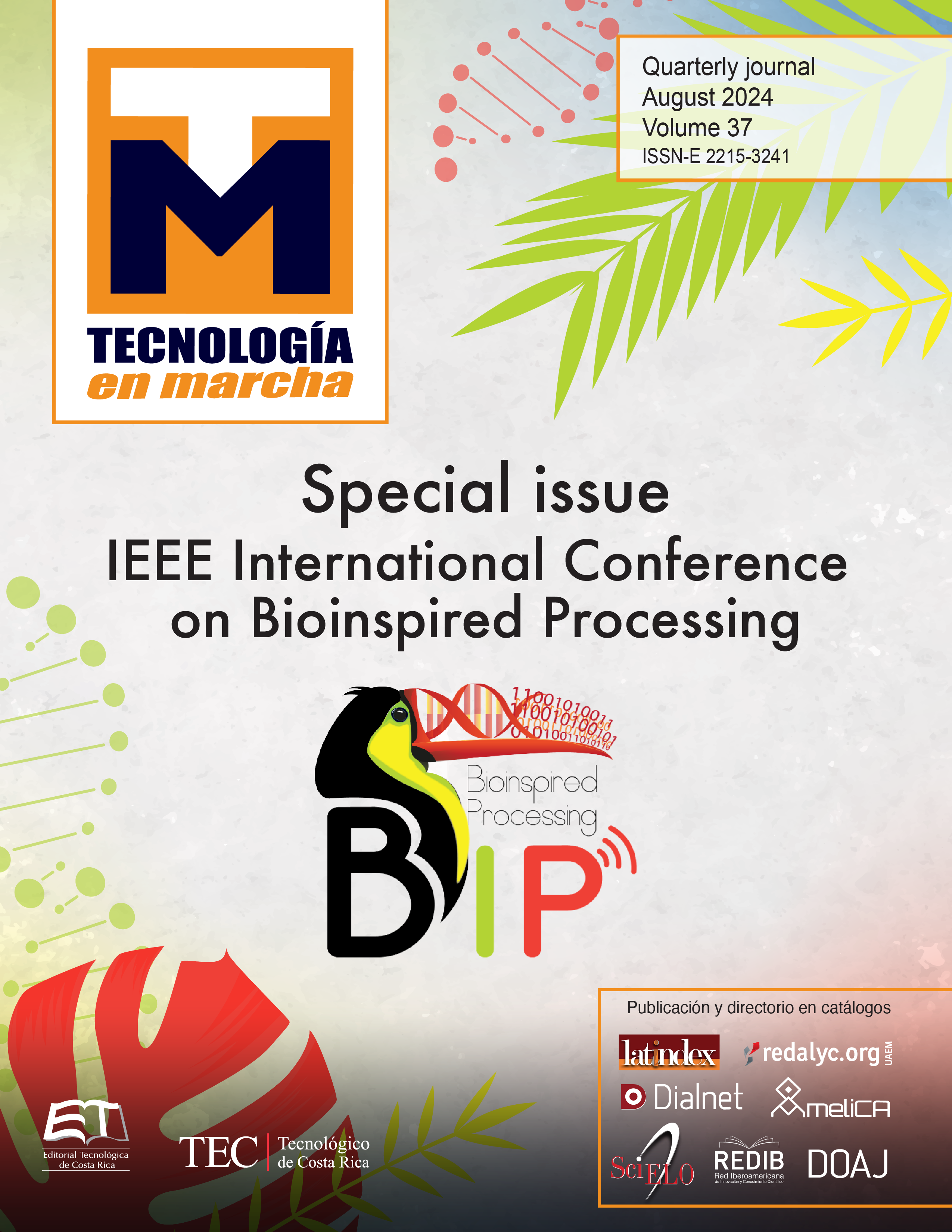Costa Rican fungi as potential biomaterials
Main Article Content
Abstract
Fungal biomaterials are gaining relevance due to their intrinsic ability of self-repair, higher
sensitivity to external conditions and faster growth respective to synthetic materials. This project
consists of evaluating and characterizing the physical properties of fungal strains isolated
from a Pacific Coast Mangrove in Costa Rica. We identified environmental strains by recording
their morphological features and complemented this by ITS-based DNA barcoding, and
subsequently, classified three strains based on morphological features and seven strains by
molecular analyses. Ongoing work is being done to measure electrical responses of these fungi
upon light stimulation; in addition, a protocol for studying their piezoelectric properties is being
developed to identify potential candidates to be used in the field of electronics. To the extent of
our knowledge, our project is the first one to report piezoelectric properties from microscopic
fungi in Costa Rica as means to determine its potential as biomaterials.
Article Details

This work is licensed under a Creative Commons Attribution-NonCommercial-NoDerivatives 4.0 International License.
Los autores conservan los derechos de autor y ceden a la revista el derecho de la primera publicación y pueda editarlo, reproducirlo, distribuirlo, exhibirlo y comunicarlo en el país y en el extranjero mediante medios impresos y electrónicos. Asimismo, asumen el compromiso sobre cualquier litigio o reclamación relacionada con derechos de propiedad intelectual, exonerando de responsabilidad a la Editorial Tecnológica de Costa Rica. Además, se establece que los autores pueden realizar otros acuerdos contractuales independientes y adicionales para la distribución no exclusiva de la versión del artículo publicado en esta revista (p. ej., incluirlo en un repositorio institucional o publicarlo en un libro) siempre que indiquen claramente que el trabajo se publicó por primera vez en esta revista.
References
M. A. Naranjo‐Ortiz and T. Gabaldón, “Fungal evolution: diversity, taxonomy and phylogeny of the Fungi”.
Biological Reviews, 94(6), 2101-2137, 2019.
A. Gandia, J. G. van den Brandhof, F. V. Appels and M. P. Jones, “Flexible fungal materials: shaping the future”. Trends in Biotechnology, 39(12), 1321-1331, 2021.
M. Haneef, L. Ceseracciu, C. Canale, I. S. Bayer, J. A. Heredia-Guerrero and A. Athanassiou, “Advanced materials from fungal mycelium: fabrication and tuning of physical properties”. Scientific reports, 7(1), 1-11, 2017.
Ecovative Design. (2013). Ecovative Design. Ecovative Design. https://ecovativedesign.com/
MycoWorks. (2021, July). MycoWorks. https://www.mycoworks.com/
A. Adamatzky, A. Gandia and A. Chiolerio, ”Towards fungal sensing skin”. Fungal Biology and Biotechnology,
(1), 2021.
A. Adamatzky, A. Nikolaidou, A. Gandia, A. Chiolerio and M. M. Dehshibi, “Reactive fungal wearable”.
BioSystems, 199, 104304, 2021.
J. José Alvarado, B. Herrera, L. Corrales, J. Asch and P. Paaby, “Identificación de las prioridades de conservación de la biodiversidad marina y costera en Costa Rica”. Rev. Biol. Trop., 2010.
S. Solano-González and F. Solano-Campos, “Production of mannosylerythritol lipids: biosynthesis, multi-omics
approaches and commercial exploitation”. Molecular Omics, 2022.
T. J. White, T. Bruns, S. J. W. T. Lee and J. Taylor, “Amplification and direct sequencing of fungal ribosomal
RNA genes for phylogenetics”. Pp. 315-322 In: PCR Protocols: A Guide to Methods and Applications, eds.
Innis, M.A., D.H. Gelfand, J.J. Sninsky, and T.J. White. Academic Press, Inc., New York, 1990.
S. F. Altschul, W. Gish, W. Miller, E. W. Myers and D. J. Lipman, “Basic local alignment search tool”. Journal
of molecular biology, 215(3), 403-410, 1990.
J. D. Thompson, D. G. Higgins and T. J. Gibson, “CLUSTAL W: improving the sensitivity of progressive multiple
sequence alignment through sequence weighting, position-specific gap penalties and weight matrix choice”.
Nucleic acids research, 22(22), 4673-4680, 1994.
L. T. Nguyen, H. A. Schmidt, A. Von Haeseler and B. Q. Minh, “IQ-TREE: a fast and effective stochastic algorithm for estimating maximum-likelihood phylogenies”. Molecular biology and evolution, 32(1), 268-274, 2015.
A. A. Rambaut, (2009). FigTree. Tree Figure Drawing Tool.
A. Ulken, R. Víquez, C. Valiente and M. Campos, “Marine fungi (Chytridiornycetes and Thraustochytriales) frorn
a rnangrove area at Punta Morales, Golfo de Nicoya, Costa Rica”. Rev. Biol. Trop., vol. 38, no. 2, pp. 243–250,
S. Masís-Ramos, P. Meléndez-Navarro and E. Méndez-Rodríguez, “Potencial biotecnológico de los hongos
marinos en las zonas costeras de Costa Rica”. Revista Tecnología en Marcha, 34(2), 48-59, 2021.

